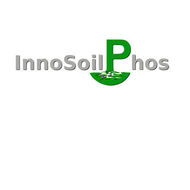Subsoils—a sink for excess fertilizer P but a minor contribution to P plant nutrition: evidence from long-term fertilization trials (2021.0)
Siebers N., Wang L., Funk T., von Tucher S., Merbach I., Schweitzer K., Kruse J.
Environmental Sciences Europe, 33 (1),
doi:10.1186/s12302-021-00496-w
Abstract
Abstract Background The phosphorus (P) stocks of arable subsoils not only influence crop production but also fertilizer P sequestration. However, the extent of this influence is largely unknown. This study aimed to (i) determine the extent of P sequestration with soil depth, (ii) analyze P speciation after long-term P fertilization, and (iii) compare soil P tests in predicting crop yields. We analyzed four long-term fertilizer trials in Germany to a depth of 90 cm. Treatments received either mineral or organic P, or a combination of both, for 16 to 113 years. We determined inorganic and organic P pools using sequential extraction, and P speciation using 31P nuclear magnetic resonance (NMR) and X-ray absorption near edge structure (XANES) spectroscopy. In addition, we applied three P soil tests, double-lactate (DL), calcium acetate lactate (CAL), and diffusive gradients in thin films (DGT). Results The results suggested that plants are capable of mobilizing P from deeper soil layers when there is a negative P budget of the topsoil. However, fertilization mostly only showed insignificant effects on P pools, which were most pronounced in the topsoil, with a 1.6- to 4.4-fold increase in labile inorganic P (Pi; resin-P, NaHCO3–Pi) after mineral fertilization and a 0- to 1.9-fold increase of organic P (Po; NaHCO3–Po, NaOH–Po) after organic P fertilization. The differences in Po and Pi speciation were mainly controlled by site-specific factors, e.g., soil properties or soil management practice rather than by fertilization. When modeling crop yield response using the Mitscherlich equation, we obtained the highest R2 (R2 = 0.61, P < 0.001) among the soil P tests when using topsoil PDGT. However, the fit became less pronounced when incorporating the subsoil. Conclusion We conclude that if the soil has a good P supply, the majority of P taken up by plants originates from the topsoil and that the DGT method is a mechanistic surrogate of P plant uptake. Thus, DGT is a basis for optimization of P fertilizer recommendation to add as much P fertilizer as required to sustain crop yields but as low as necessary to prevent harmful P leaching of excess fertilizer P.